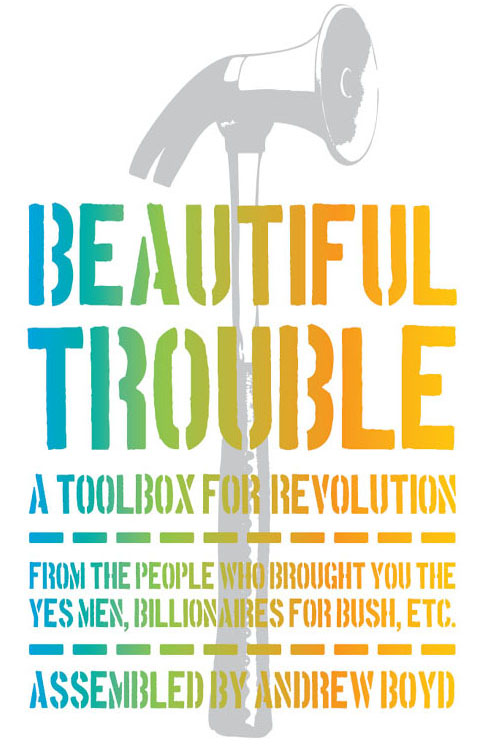Continent. journal, No. 1-7 (2011-2012)
Filed under journal | Tags: · art, culture, film, media studies, philosophy, poetry, politics, sound recording, theory
Continent. maps a topology of unstable confluences and ranges across new thinking, traversing interstices and alternate directions in culture, theory, politics and art.
Continent. exists as a platform for thinking through media. text, image, video, sound and new forms of publishing online are presented as reflections on and challenges to contemporary conditions in politics, media studies, art, film and philosophical thought.
Contributors to issue 2.3: François Laruelle, Andy Weir, Henrik Lübker, Berit Soli-Holt & April Vannini & Jeremy Fernando, Andrea Fraser, Sean Gurd, Paul Amitai, Sasha Ross, Thierry Geoffroy.
Contributors to issue 2.2: Vilém Flusser, Bonnie Jones, Eugene Thacker, Gary J. Shipley and Nicola Masciandaro, Vincent W.J. van Gerven Oei, Sean Joseph Patrick Carney, The Editors of Speculations & continent., Ishac Bertran, Duane Rousselle, A. Staley Groves.
Editors: Jamie Allen, Paul Boshears, Nico Jenkins
Creative Commons Attribution 3.0 License
ISSN 2159-9920
Download issue 2.3 (single PDF)
Download issue 2.2 (single PDF)
View issue 2.3 (HTML and PDF articles)
View issue 2.2 (HTML and PDF articles)
View back issues (HTML and PDF articles)
Andrew Boyd (ed.): Beautiful Trouble: A Toolbox for Revolution (2012)
Filed under book | Tags: · activism, art, debt, hacking, occupy movement, politics, protest, revolution, self-organization, social movements, tactical media, theory

“From Cairo to cyberspace, from Main Street to Wall Street, today’s social movements have a creative new edge that’s blurring the boundaries between artist and activist, hacker and dreamer. But the principles that make for successful creative action rarely get hashed out or written down.
Until now.
Beautiful Trouble brings together ten grassroots groups and dozens of seasoned artists and activists from around the world to distill their best practices into a toolbox for creative action. Among the groups included are Agit-Pop/The Other 98%, The Yes Men/Yes Labs, Code Pink, SmartMeme, The Ruckus Society, Beyond the Choir, The Center for Artistic Activism, Waging Nonviolence, Alliance of Community Trainers and Nonviolence International.”
Contributors include Rae Abileah, Ryan Acuff, Celia Alario, Phil Aroneanu, Peter Barnes, Jesse Barron, Andy Bichlbaum, Nadine Bloch, Kathryn Blume, L.M. Bogad, Josh Bolotsky, Mike Bonanno, Andrew Boyd, Kevin Buckland, Margaret Campbell, Doyle Canning, Samantha Corbin, Yutaka Dirks, Steve Duncombe, Mark Engler, Simon Enoch, Jodie Evans, John Ewing, Brian Fairbanks, Bryan Farrell, Janice Fine, Lisa Fithian, Cristian Fleming, Elisabeth Ginsberg, Stan Goff, Arun Gupta, Silas Harrebye, Judith Helfand, Daniel Hunter, Sarah Jaffe, John Jordan, Dmytri Kleiner, Sally Kohn, Steve Lambert, Anna Lee, Stephen Lerner, Zack Malitz, Nancy Mancias, Duncan Meisel, Matt Meyer, Dave Oswald Mitchell, Tracey Mitchell, George Monbiot, Brad Newsham, Gaby Pacheco, Mark Read, Patrick Reinsborough, Simon Roel, Joshua Kahn Russell, Leonidas Martin Saura, Levana Saxon, Maxine Schoefer-Wulf, Nathan Schneider, Kristen Ess Schurr, John Sellers, Rajni Shah, Brooke Singer, Matt Skomarovsky, Andrew Slack, Phillip Smith, Jonathan Matthew Smucker, Starhawk, Eric Stoner, Jeremy Varon, Virginia Vitzthum, Harsha Walia, Jefferey Webber and the Coalition of Immokalee Workers.
Assembled with Dave Oswald Mitchell
Publisher OR Books, New York/London, June 2012
Creative Commons Attribution-NonCommercial-ShareAlike 3.0 Unported License
ISBN 9781935928577
474 pages
Book website
Kickstarter page
Editor
Publisher
PDF (updated on 2024-2-18)
EPUB (added on 2024-2-18)
HTML
Tiqqun: Grundbausteine einer Theorie des Jungen-Mädchens (1999/2009) [German]
Filed under book | Tags: · biopolitics, biopower, body, capitalism, consumerism, desire, feminism, labour, metaphysics, philosophy, reification, seduction, sexuality, theory

“Das Junge-Mädchen (la Jeune-Fille) ist die Gestalt, die Ewig-Weibliches und ewige Jugend in sich vereint. Seinen Ursprung hat es im Bankrott des von der totalen Kommerzialisierung überrannten Feminismus. Einzig fähig zu konsumieren (sowohl in der Freizeit wie bei der Arbeit), ist das Junge-Mädchen zugleich das luxuriöseste Konsumgut, das gegenwärtig in Umlauf ist: die Leit-Ware, die dazu dient, alle anderen zu verkaufen. Mit dem Junge-Mädchen wird Wirklichkeit, was sich nur die überdrehtesten Krämerseelen erträumten: die autonome Ware, die spricht und geht, die lebende Sache.
Doch woran erkennt man es? Zunächst daran, dass es ist, was es zu sein scheint, sonst nichts. Zum zweiten hat alles, was das Junge-Mädchen tut, etwas Professionelles an sich, da es seine gesamte Existenz als eine Frage des Managements betrachtet. Als Eigentümerin ihres Körpers, verkauft das Junge-Mädchen (»Sternchen«, Model, Reklame, Bild) seine »Verführungskraft« wie man einst seine »Arbeitskraft« verkaufte. Selbst seine Liebschaften sind Arbeit, und wie jede Arbeit prekär… Schließlich altert das Junge-Mädchen nicht, es verwest.”
„Julien Coupat und seine Freunde können nicht die Autoren der in TIQQUN veröffentlichten Texte sein, weil diese in einer Zone angesiedelt sind, in der es unmöglich ist, zwischen Subjekt und Dispositiv zu unterscheiden, d.h. in der der Begriff des Autors jegliche Bedeutung verloren hat.“
Der Text ist in seiner ersten Version in der Nummer 1 von Tiqqun im Januar 1999 erschienen. Die vorliegende Übersetzung folgt der überarbeiteten Fassung in: TIQQUN, Premiers matériaux pour une théorie de la Jeune-Fille, Rennes 2006.
Übersetzt von Deutsche Sektion der PI (Parti Imaginaire)
Merve Verlag, 2009
IMD 334
ISBN 3883962716, 9783883962719
120 Seiten
PDF
French edition (2001)
English edition (2010)

